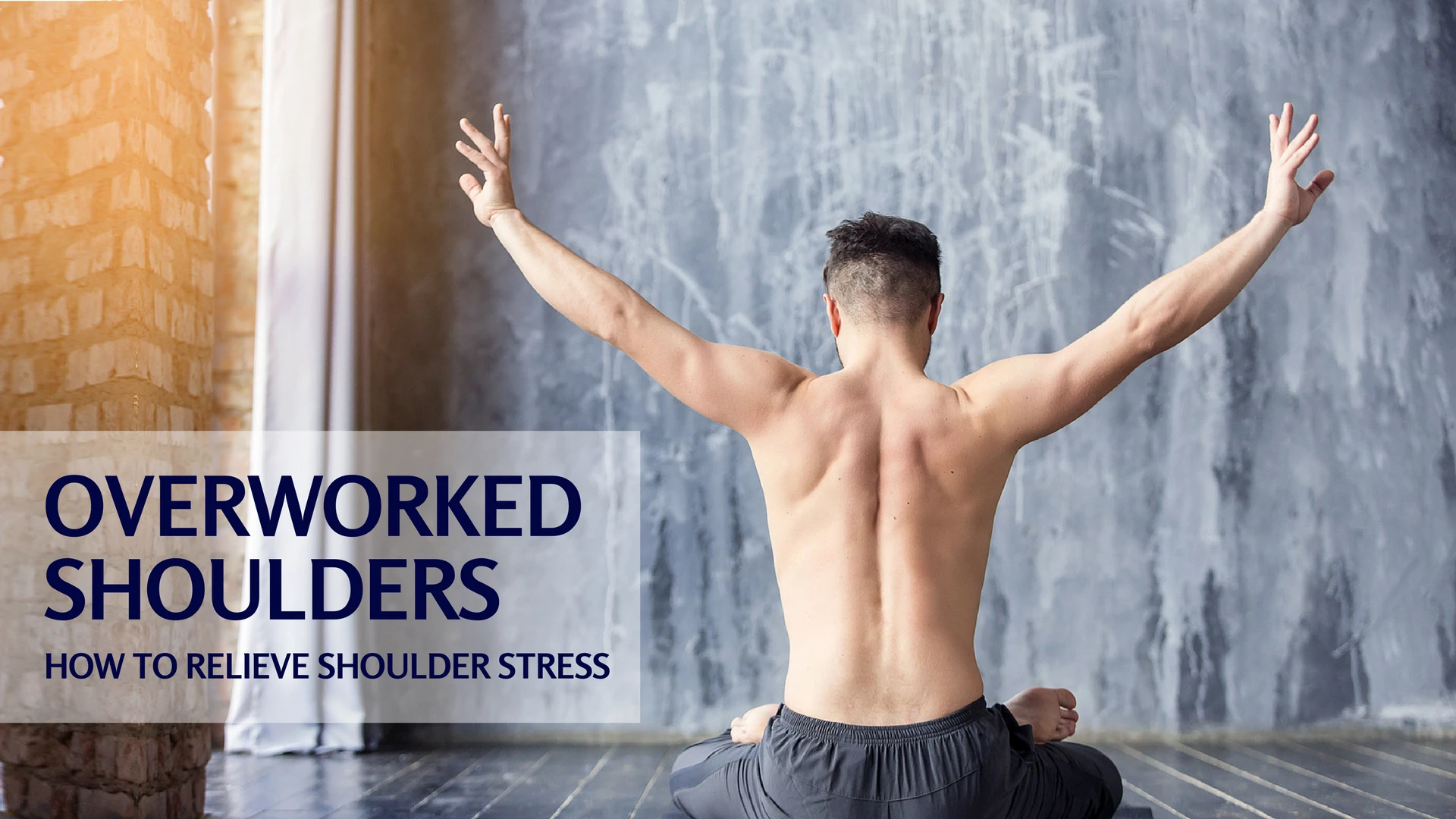Keep Your Shoulders Safe in Your Yoga Practice – 3 Tips for Healthy Shoulders

Shoulder pain is a common condition, which impacts people of all ages and activity levels. The shoulder is the most mobile joint in our body, and it can benefit greatly from a regular yoga practice.
The shoulder joint trades stability for mobility. For this reason, it’s key to sequence your yoga practice to strengthen the shoulders as well as to stretch them.
The shoulder complex is elaborate, with many moving parts and as a result, many factors contribute to keeping it healthy. In this article, we will give you some tips to:
1) Do a yoga test to determine your current shoulder health;
2) Learn three key strategies to help keep your shoulders healthy in your yoga practice; and
3) Better understand how shoulder anatomy affects in your yoga practice!
Shoulder Anatomy Basics: Why This Structure is So Complex
The shoulder is referred to as the “shoulder complex”; and complex it is! Not only are there many parts that make up this structure, but it is also very precariously attached to the rest of the skeleton at a singular point at the sternoclavicular joint (where your sternum and collarbone meet). This makes the shoulder complex unique and also rather unstable.
Shoulder Anatomy Breakdown: the glenohumeral joint (the ball and socket); the sternoclavicular joint and acromioclavicular joint (joints on both sides of the collarbone); and the scapulothoracic joint (the shoulder blade sitting on the ribcage).
What Each Structure Does: The rotator cuff works to stabilize and keep the ball-and-socket joint aligned. There are 17 muscles that attach to each shoulder blade, all requiring a lot of strength and mobility to coordinate all the moving parts.
How the Shoulder Moves: Scapulohumeral rhythm is a term to describe how the shoulder complex moves. The shoulder blade muscles are vital to our shoulder movement, and if this movement is altered it is typically called scapular dyskinesis. When movement quality is poor, it can lead to abnormal stresses on the shoulder joint capsule and musculature.
Yoga Test for Shoulder Health
Our shoulder mechanics are heavily influenced by our posture. Here’s a simple test:
-
Get into a slouched position and try to raise your arms overhead in Urdva Hastasana (Upward Salute). Note how high you can reach and how much effort it takes to do this.
-
Now sit up straight and raise your arms again. You will likely notice an ability to reach higher and with more ease when you are in an upright position.
3 Yoga Tips for Healthy Shoulders
When we spend prolonged periods of time in front of a computer, as many of us do, we tend to settle into a hunched position with our heads and shoulders moving forward, and our spines in a flexed position. Although poor posture does not directly cause pain or dysfunction, it is often a contributing factor.
Our bodies are great at adapting to the stresses we place on them throughout the day. If we spend time in one posture for too long, our bodies will adjust. In a hunched, forward-head and rounded-shoulders position, our pectorals and our upper trapezius get tight (think of those muscle knots in our neck and shoulders we get after a long, stressful day), and the muscles in the back, including those important to the stability of the shoulder blades, can get weak and/or inhibited, meaning they don’t work efficiently or effectively.
-
It is important to take breaks to stretch, stand and change positions so we don’t become fixed in a forward head and rounded shoulder position. Simply moving regularly throughout the day into a variety of positions makes a huge difference. Set an alarm, or try one of the many apps out there to remind you to take a break.
-
Keeping the upper back/thoracic spine mobile is key. When we raise our arms overhead, our upper back must also straighten or extend slightly to prevent impingement of the shoulder joint. Here is a wonderful restorative bridge pose variation to help with mobility.
-
It is also imperative to have a stable shoulder joint and shoulder blade. Some strategies include exercises or positions that reverse the posture you spend prolonged periods of time in. One of my favorites is Bhujangasana (Cobra Pose), which, when practiced properly, assists in moving almost all of your joints into the opposite position they are in when you sit. Another pose that can really strengthen the shoulders is also a classic: Adho Mukha Svanasana (Downward Facing Dog).
Reprinted with permission from synergyptyoga.com

Sarah Evans, DPT, RYT
Sarah is a physical therapist at Synergy Physical Therapy and Yoga, Inc. in Evergreen, Colorado. She has been a yoga teacher since 2015, with a special interest in teaching beginner and senior classes. She enjoys incorporating yoga principles into her physical therapy practice. Sarah is an avid climber and enjoys playing in the mountains of Colorado.



